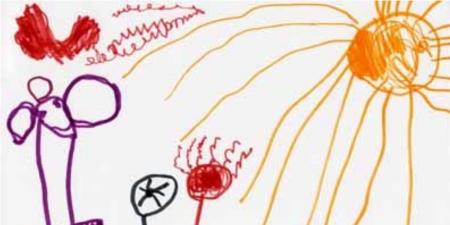So long as we live, they too live, as we remember them.
R.B. Gittelsohn
The topic of children dying is an uncomfortable and, at times, even taboo subject in the field of medicine. Many physicians and laypeople think of it as an infrequent event that only occurs in cases of rare medical failure. Unfortunately, this is not the reality. For example, in the year 2003, more than 50,000 infants, children, and adolescents died in the United States alone [1]. Of these children, only 10 percent died in their own homes, with the remainder passing in hospitals. More specifically, 49-59 percent of these deaths occurred in the PICU, and 31-33 percent in the NICU [2]. Despite the numbers of intensive care unit deaths and the availability of potential medical interventions, Wolfe et al. surveyed the parents of children who died of cancer and found that 89 percent perceived their children as having suffered with at least one bothersome symptom in their last month of life, most commonly pain, fatigue, or dyspnea [3]. In 2005, the National Hospice and Palliative Care Organization noted that of the 4,100 hospice and palliative care programs that exist in the U.S., only 738 (18 percent) provided pediatric palliative and hospice services [4]. In addition, it was found that less than 10 percent of children who met criteria for palliative or hospice services were enrolled in these programs [5].
So what more could be done to decrease the suffering associated with these events? Palliative care has developed as our health care system’s attempt to answer this question. The World Health Organization defines palliative care as “an approach that improves the quality of life of patients and their families facing the problems associated with life-threatening illness, through the prevention and relief of suffering by means of early identification and impeccable assessment and treatment of pain and other problems, physical, psychosocial and spiritual” [6]. It goes on to state that, in the pediatric context, it is
the active total care of the child’s body, mind and spirit, and also involves giving support to the family; begins when illness is diagnosed, and continues regardless of whether or not a child receives treatment directed at the disease; requires a broad multidisciplinary approach that includes the family and makes use of available community resources…[and] can be successfully implemented even if resources are limited [6].
Given the number of children who die of terminal illness each year, as well as the many children living with life-limiting conditions (in 2003, the IOM identified 400,000 such children [5]), why are so few of them receiving the benefits of palliative care? In this issue of Virtual Mentor, I hope to explore some of the possible answers, including—but not limited to—the widespread misunderstanding of applicable laws and standards of care; physicians’ own difficulty accepting death as a natural phase of life, rather than a medical failure; lack of awareness of a child’s potential capacity to anticipate his or her own death; the misbelief that shielding a family from the medical and prognostic realities is helpful; and the lack of appropriate education and research, which leaves many physicians feeling inadequate and incapable of having frank discussions with families regarding impending death. These factors, which, in my opinion, have led to the dearth of pediatric end-of-life care, will be examined through identification of the inherent, omnipresent ethical dilemmas of the field. It is my firm belief that only through open dialogue about these ethical challenges will pediatric palliative care become mainstream in medicine.
References
-
National Consensus Project for Quality Palliative Care. Clinical practice guidelines for quality palliative care 2004. http://www.nationalconsensusproject.org/guideline.pdf. Accessed January 27, 2007.
- Carter BS, Howstein M, Gilmer MJ, et al. Circumstances surrounding the deaths of hospitalized children; opportunities for pediatric palliative care. Pediatrics. 2004;114(3):e361-e366.
- Wolfe J, Grier HE, Klar N, et al. Symptoms and suffering at the end of life in children with cancer. N Eng J Med. 2000;342(5):326-333.
- Carroll J, Torkildson C, Winsness J. Issues Related to Providing Quality Pediatric Palliative Care in the Community. Pediatr Clin N Am. 2007;54(5):813-827.
-
Field MJ, Behrman RE, eds. When Children Die: Improving Palliative and End-of-Life Care for Children and Their Families. Washington, DC: National Academies Press; 2003.
-
World Health Organization. WHO definition of palliative care. http://www.who.int/cancer/palliative/definition/en/. Accessed May 30, 2010.



